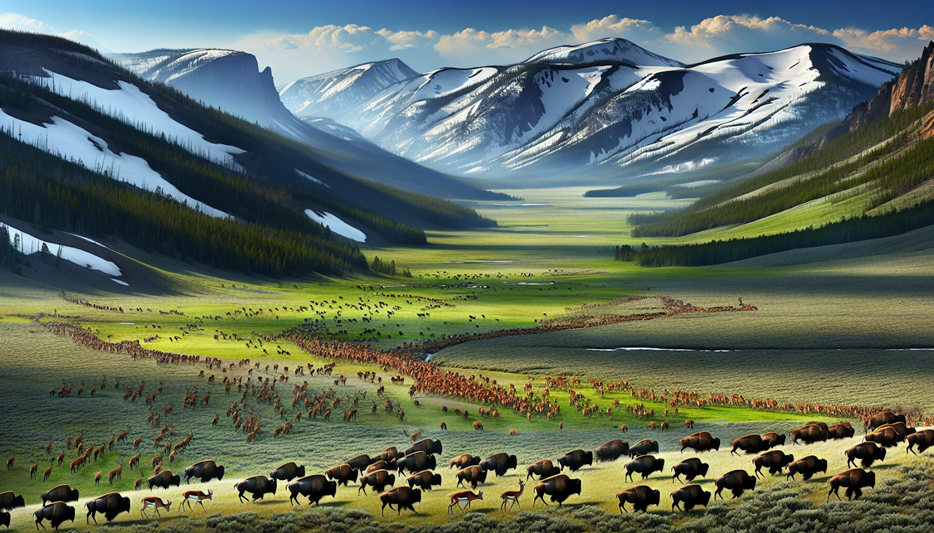It’s the kind of headline that gets your heart racing: “Animals flee Yellowstone, experts fear an eruption!”
Viral videos show bison running full speed down the road. TikTok comments claim “they know something we don’t.” It’s easy to get caught up in the drama. After all, we’ve seen disaster movies, and in those, when the animals run, it’s time to panic.
But here’s the truth most people miss: in Yellowstone, animal movement is a story of survival, not supernatural foresight.
The real reason animals leave Yellowstone
The idea that wildlife flees the park due to ominous volcanic signals or emotional responses to special events sounds compelling—but it’s far from accurate.
In reality, Yellowstone’s animals aren’t fleeing. They’re migrating. And they do it every year, like clockwork.
Seasonal migration: Nature’s built-in GPS
Every spring and fall, animals like elk, bison, and pronghorn make a calculated move between elevations:
- Summer: Higher elevations offer lush, green grazing grounds and cooler temperatures.
- Winter: As snow piles up, animals seek lower valleys where food remains accessible.
This isn’t a reaction to danger—it’s a strategy. Migration is essential to survival in challenging mountain ecosystems like Yellowstone.
Food: The ultimate motivator
Think of it this way: Yellowstone animals are constantly chasing the “green wave”—that fresh spring grass moving up the landscape as snow melts.
And it’s not just plant-eaters. Predators like wolves, mountain lions, and bears follow these migration patterns too, trailing the herds that provide their meals.
One 2021 study tracked GPS-tagged elk migrating nearly 90 miles from winter range to summer fields. They weren’t spooked—they were hungry, and nature guided them where to go.
What about volcanoes or wildfires?
Let’s clear this up: Scientists monitor Yellowstone’s volcanic system constantly. The current volcanic activity level? Normal.
Despite social media panic, there have been no significant signs of geological unrest. And those dramatic viral videos? Many were either taken years ago, misrepresented, or even AI-generated.
As for extreme events like wildfires, yes, those can alter animal behavior. But out-of-season movements triggered by fire are rare and highly localized. And there have been no recent incidents forcing mass wildlife movement.
Do animals care about special human events?
Short answer: no.
Animal behavior isn’t influenced by your weekend music festival or the 4th of July tourists. While some wildlife might temporarily avoid high-traffic human areas, it’s a reaction to our presence, not our calendar.
They don’t understand celebrations or fear national park visitor surges. Simply put: animals aren’t wired to comprehend “special events” in the human sense.
So why does this myth keep coming back?
Because it’s dramatic. And as humans, we love a good mystery. We look at running bison and imagine they’re messengers warning of doom.
But when you dig into decades of tracking studies, expert observations, and movement patterns recorded by Yellowstone biologists, the answer is clear:
- Animals move with the seasons, not the seismic sensors.
- No unusual migrations = no hidden disasters.
- They’re surviving, not sensing the apocalypse.
In their rhythm, there’s wisdom
Something is humbling about realizing wildlife has a rhythm older and wiser than we give it credit for. Not mystical. Not magical. Just smart, instinct-driven adaptation.
So next time you hear that Yellowstone animals are “fleeing,” pause. Ask: What season is it? What elevation are they heading toward? Chances are, they’re just following nature’s well-worn path.
And maybe we should follow theirs—instead of chasing every sensational headline.




Leave a Comment